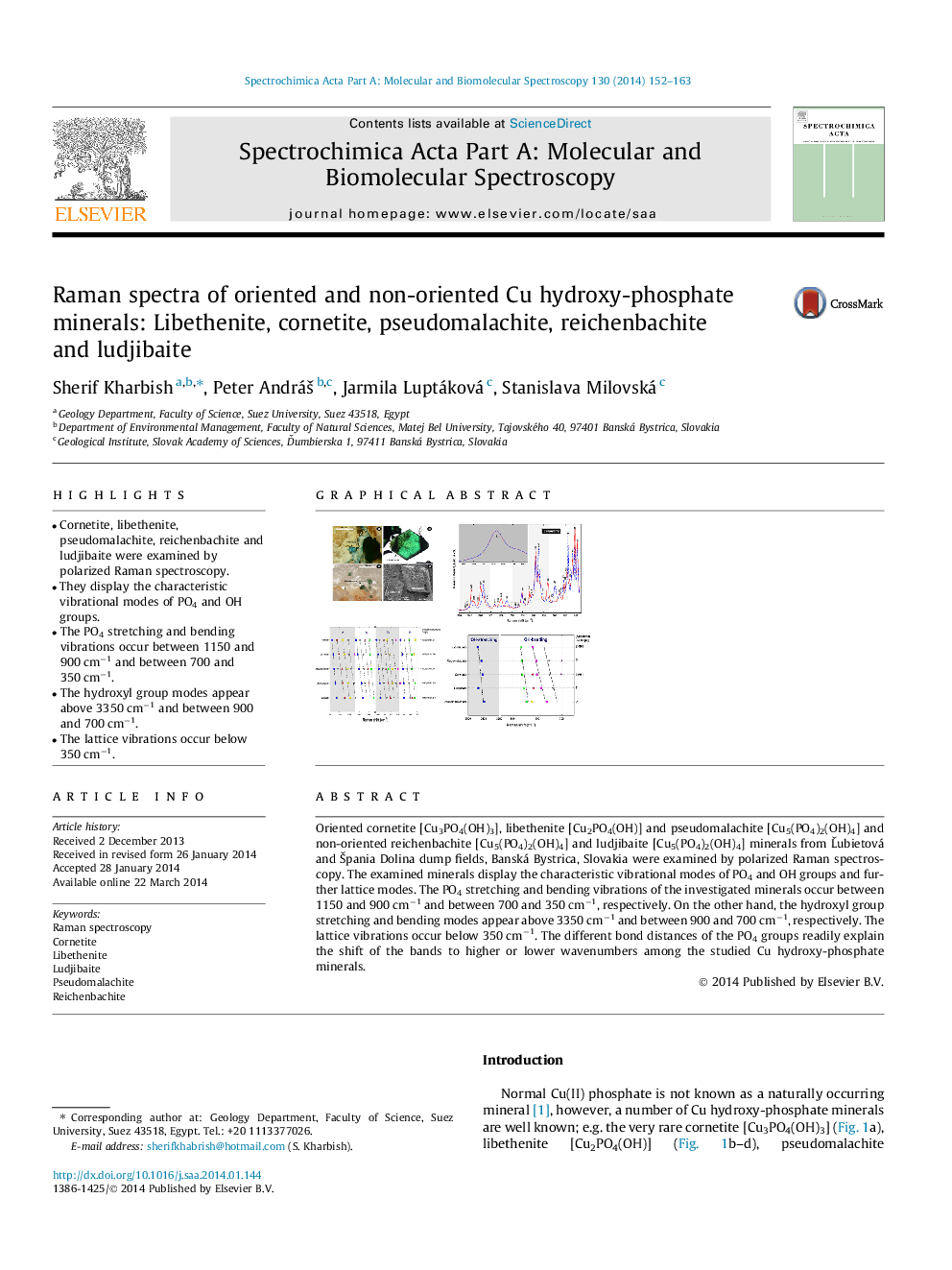| کد مقاله | کد نشریه | سال انتشار | مقاله انگلیسی | نسخه تمام متن |
|---|---|---|---|---|
| 1230338 | 1495238 | 2014 | 12 صفحه PDF | دانلود رایگان |

• Cornetite, libethenite, pseudomalachite, reichenbachite and ludjibaite were examined by polarized Raman spectroscopy.
• They display the characteristic vibrational modes of PO4 and OH groups.
• The PO4 stretching and bending vibrations occur between 1150 and 900 cm−1 and between 700 and 350 cm−1.
• The hydroxyl group modes appear above 3350 cm−1 and between 900 and 700 cm−1.
• The lattice vibrations occur below 350 cm−1.
Oriented cornetite [Cu3PO4(OH)3], libethenite [Cu2PO4(OH)] and pseudomalachite [Cu5(PO4)2(OH)4] and non-oriented reichenbachite [Cu5(PO4)2(OH)4] and ludjibaite [Cu5(PO4)2(OH)4] minerals from Ľubietová and Špania Dolina dump fields, Banská Bystrica, Slovakia were examined by polarized Raman spectroscopy. The examined minerals display the characteristic vibrational modes of PO4 and OH groups and further lattice modes. The PO4 stretching and bending vibrations of the investigated minerals occur between 1150 and 900 cm−1 and between 700 and 350 cm−1, respectively. On the other hand, the hydroxyl group stretching and bending modes appear above 3350 cm−1 and between 900 and 700 cm−1, respectively. The lattice vibrations occur below 350 cm−1. The different bond distances of the PO4 groups readily explain the shift of the bands to higher or lower wavenumbers among the studied Cu hydroxy-phosphate minerals.
Figure optionsDownload as PowerPoint slide
Journal: Spectrochimica Acta Part A: Molecular and Biomolecular Spectroscopy - Volume 130, 15 September 2014, Pages 152–163